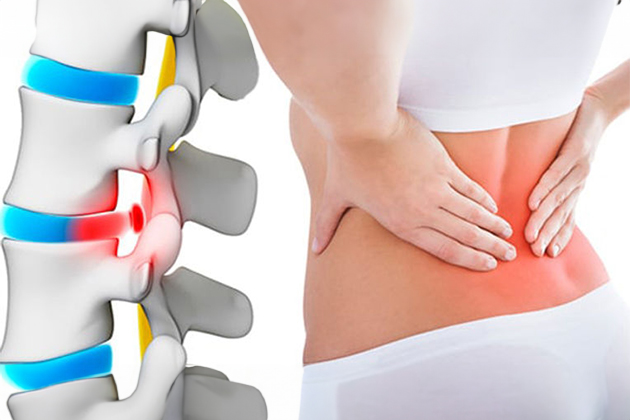
What is Osteoporosis?
Osteoporosis is a condition characterized by a decrease in bone quantity and density, resulting in a reduction in bone strength and an increased risk of fractures due to deterioration of bone tissue. This disease leads to bones becoming weaker and more fragile.
Bones Most Affected:
- Wrist
- Hip
- Spine
Early detection of low bone density levels is important to prevent osteoporosis and related fractures, pain, and deformities.
Who is Affected by Osteoporosis? What are the Risk Factors?
There are three main risk factors:
- Age: With aging, there is a 0.5% loss in bone density each year after the age of 50, regardless of gender.
- Genetics: If someone in the family has osteoporosis, the risk of developing osteoporosis is 50-85%.
- Gender: Women are at higher risk than men. Especially after menopause, they face a higher risk of bone loss. In the first 5-7 years after menopause, there can be up to a 3% loss in bone density.
Other Risk Factors:
- Smoking
- Excessive alcohol and caffeine intake
- Sedentary lifestyle
- Poor nutrition: Inadequate intake of calcium and vitamin D
- Chronic diseases: Liver diseases, intestinal diseases, rheumatoid arthritis, hyperthyroidism
- Medications: Steroids, cancer drugs, chronic antacid use, blood thinners
Diagnosis of Osteoporosis
- Direct Radiography: Cannot detect osteoporosis until a significant amount of bone is lost.
- DEXA (Dual-Energy X-ray Absorptiometry) Scan: A painless procedure lasting about 30 minutes with low radiation exposure. Results are evaluated with T-Score and Z-Score. A T-Score between -1.0 and -2.5 indicates osteopenia, while a score below -2.5 indicates osteoporosis.
- Imaging Techniques: Magnetic resonance imaging (MRI) and computed tomography (CT).
Treatment of Osteoporosis
Prevention and Lifestyle:
- Nutrition: A daily intake of 1000 to 1500 mg of calcium is recommended. Sources of calcium include cheese, butter, fortified milk, yogurt, and leafy green vegetables. Fish, oysters, and fortified cereals are recommended for vitamin C.
- Exercise: Walking, weightlifting, and resistance exercises are important for bone health. Swimming is recommended for general physical fitness.
- Smoking and Alcohol: Avoid smoking and excessive alcohol consumption.
Medical Treatment:
- Medications: Drugs containing estrogen, alendronate, risedronate, strontium, raloxifene, calcitonin, and parathyroid hormone.
- Physical Therapy and Rehabilitation: Appropriate exercise programs and treatment plans.
Surgical Intervention:
If there is vertebral collapse due to osteoporosis, severe back or waist pain may occur. In patients who seek early treatment, closed methods such as kyphoplasty or vertebroplasty involve the injection of bone cement into the spine. These methods significantly relieve pain and allow patients to walk. Surgery using screws and various connectors is performed for excessively collapsed or severely angled vertebrae to achieve fusion.
Frequently Asked Questions
In the early stages, osteoporosis might not show any symptoms. As it progresses, symptoms can include bone fractures (especially in the hip, wrist, and spine), decreased height, kyphosis, and chronic back pain. Vertebral fractures can also lead to posture problems and back pain, which are common symptoms.
Osteoporosis can affect people of all ages, but older women are at the highest risk. The three main risk factors are age, genetics, and gender. Other risk factors include smoking, excessive alcohol and caffeine consumption, a sedentary lifestyle, inadequate calcium and vitamin D intake, chronic diseases, and certain medications.
Osteoporosis is typically diagnosed using a DEXA (Dual-Energy X-ray Absorptiometry) scan. This test measures bone mineral density and evaluates it using T-scores and Z-scores. A T-score between -1.0 and -2.5 indicates osteopenia, while a T-score lower than -2.5 indicates osteoporosis. Other imaging methods like MRI and CT scans may also be used.
The treatment and prevention of osteoporosis involve nutrition, exercise, lifestyle changes, and medical treatments. A daily intake of 1000 to 1500 mg of calcium and sufficient vitamin D is recommended. Walking, weightlifting, and resistance exercises are beneficial for bone health. Avoiding smoking and excessive alcohol consumption is crucial. Medical treatments include medications like estrogen, bisphosphonates, and calcitonin. Physical therapy and rehabilitation support bone health, and in severe cases, surgical interventions such as kyphoplasty or vertebroplasty may be necessary.

